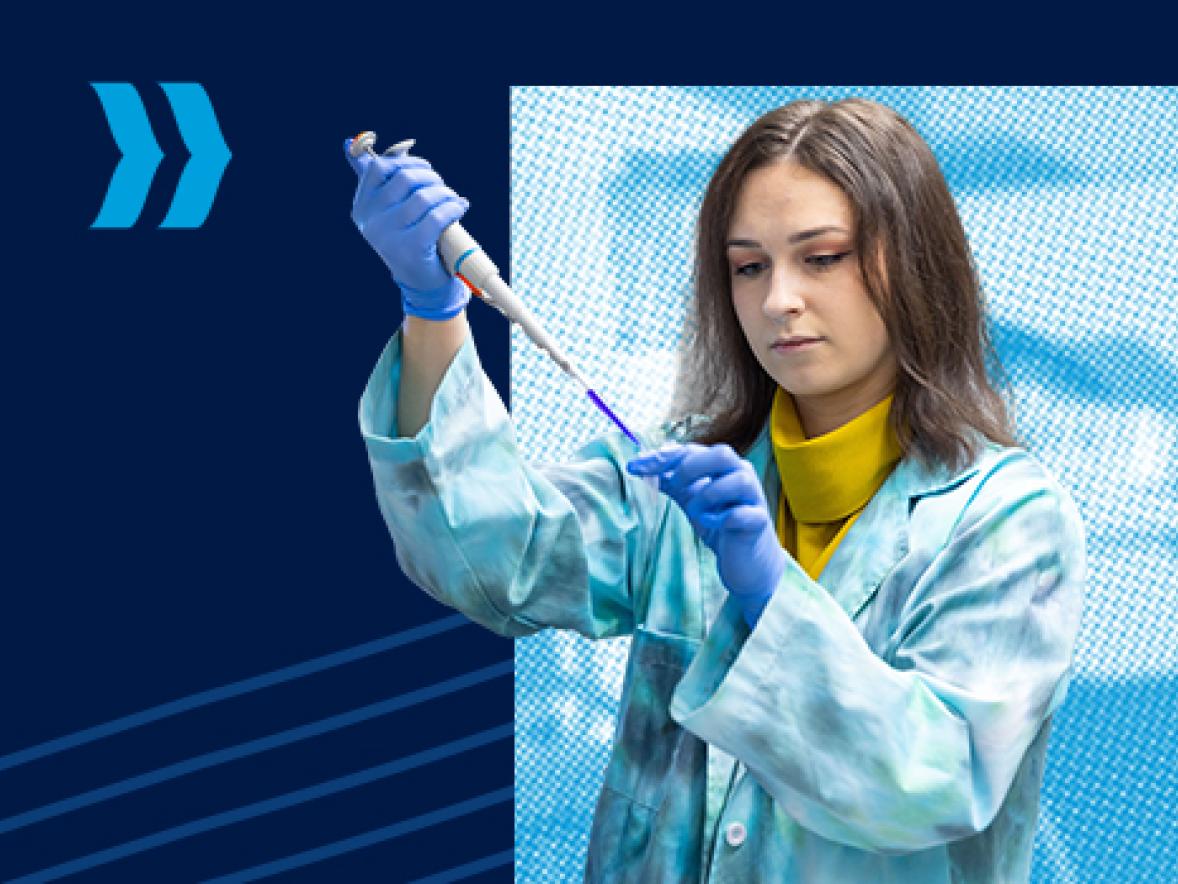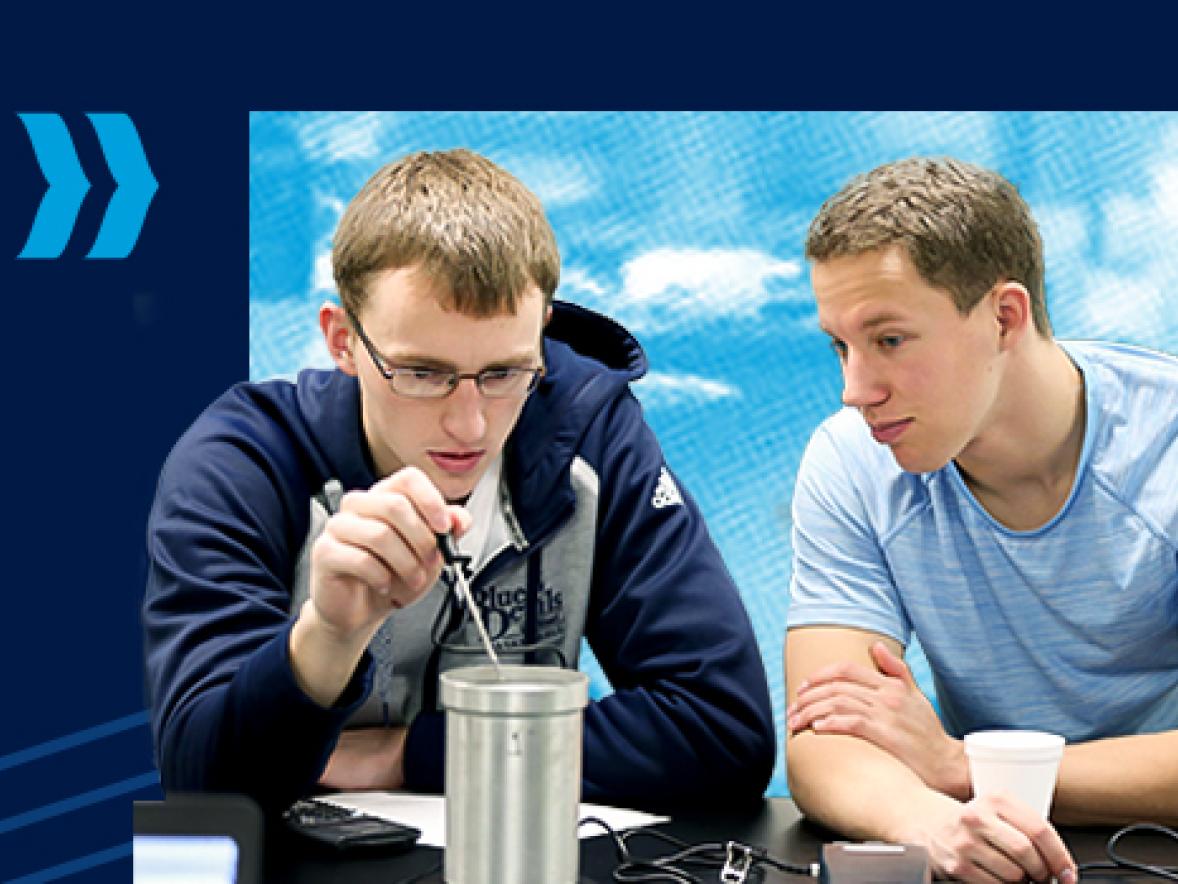Engineer Your Future
UW-Stout's ABET-accredited Bachelor of Science (B.S.) in Computer & Electrical Engineering (CEE) program is designed to propel you into the future of technology. This program uniquely blends the disciplines of computer hardware and software, grounded in the principles of electrical engineering and computer science. Through a combination of innovative courses and state-of-the-art laboratories, you will gain hands-on experience from day one.
100% of Graduates Are Employed or Continuing Education Within 6 Months
Career-Defining Curriculum
UW-Stout's B.S. Computer & Electrical Engineering program will equip you with the knowledge, skills, and experiences to enhance regional and national industries. Our program focuses on building robust computer engineering expertise, grounded in the principles of electrical engineering and computer science. Featuring a calculus-based curriculum with a strong emphasis on mathematics and science, it progresses to encompass practical abilities in analysis and design, covering areas such as:
- Electrical Engineering
- Robotics
- Electronics
- Sensors & Actuators
- Wireless Communication
- Systems Engineering
- Mathematics
- Analysis & Design of Computer Systems
- Design of Hardware/Software Systems that Use Embedded Digital Processors
Degree Concentrations & Related Minors
- Computer Engineering
- Electrical Engineering
Program graduates automatically fulfill the requirements for minors in Mathematics and Computer Science but must submit an Add or Change Minor form to the Advisement Center to formally declare a minor on their academic records. We also offer minors in Advanced Automation and Biomedical Instrumentation.
Complete the Request Information form now to get detailed program insights and embark on your journey towards engineering excellence.
Request Information

UW-Stout's B.S. Computer & Electrical Engineering program is accredited by the Engineering Accreditation Commission of ABET, under the commission’s General Criteria and Program Criteria for Electrical, Computer, Communications, Telecommunication(s), and Similarly Named Engineering Programs.
Industry-Experienced Faculty Instruction
Forget TA-taught classes and 200-person lectures. At UW-Stout, building close relationships with our industry-experienced and academically accomplished computer and electrical engineering faculty will play a key role in your polytechnic education. Learn more about your future instructors!
Do More in Our Industry-Standard Labs
The program distinctly prioritizes laboratory-based learning and student-led engineering design projects. It concentrates on developing hardware and software design skills for engineering systems that incorporate embedded digital processors, including microprocessors, microcontrollers, digital signal processors, and personal computers. Our small class sizes make it possible for professors to work with each one of the students on lab and project design in class. As Wisconsin's only comprehensive polytechnic university, we focus on:
- Hands-on Laboratory Projects
- Engineering Design Projects
- Real-World Challenges
- Employment Competitiveness
- Hardware & Software Development
- Active Learning
- Comprehensive Application Ability
- Innovation Abilities
Professional Internships in Computer & Electrical Engineering
Take your education into industry and earn while you learn through UW-Stout’s award-winning Cooperative Education & Internship Program (CEIP) and other placements. Unlike traditional internships, our professional paid and unpaid credit-earning experiences connect you with leaders in your field, including Fortune 500 employers, impactful non-profits and government agencies, to ensure you’re set up for success long before you graduate. More than a third of Stout students accept positions after graduation with their CEIP employer.
Recent Internship Employers
- 3M
- AT&T
- Gulfstream Aerospace Corporation
- Hewlett Packard Enterprise
- IBM
- Medtronic
- nVent
- Western Digital Technologies, Inc.
Select Internship Position Titles
- Automation Engineer Intern
- Controls Engineer Intern
- Electrical Characterization Intern
- Engineering Programming Intern
- Manageability Firmware Intern
- Software Engineer Intern
- Sustainable Product Development Intern
- Testing Engineer Intern
Student Projects & Capstones
The following video showcase provides an in-depth look at the design, and computer and electrical components of CEE student projects.
Click on the dropdown menu in the upper left-hand corner of the video to watch the seven videos. Or view the student project image gallery.
$73K Average Starting Salary of UW-Stout Computer & Electrical Engineering Graduates
Graduate Ready to Solve Tomorrow's Engineering Challenges
Each year, Stout computer and electrical engineering graduates are among the most sought-after hires to enter the workforce, routinely beating out applicants from bigger schools for coveted hardware and software positions with major employers. Why? Everything you learn at Stout enhances the skills you'll use on day one of your career. Where others list their education, you’ll be able to identify your experience.
Recent Employers
- Aspen Technology and Open Systems International
- Collins Aerospace
- DigiKey Electronics
- EPIC
- General Dynamics Mission Systems
- Georgia-Pacific
- Graco Inc.
- Hewlett Packard Enterprise
- IBM
- Kohler Company
- Medtronic
- MotoCrane, LLC
- nVent
- Quanta Services, Inc.
- TruNorth Automation
- United Launch Alliance (ULA)
Discover More Degrees in Engineering
As a student in the Computer and Electrical Engineering program, you must have an aptitude for science and mathematics. We encourage you to take as many upper-level math and science courses in high school as possible, including mathematics through algebra and trigonometry, physics, and chemistry. Early development of computer skills is also very helpful.
Program Educational Objectives
The Computer and Electrical Engineering program develops computer engineers who are:
- in demand by employers
- recognized for their ability to apply engineering expertise
- recognized for their leadership and teamwork skills
- demonstrate an ability to learn and adapt to the changing environment created by societal and technical influences
- demonstrate continued career growth and professional development
Student Outcomes
UW-Stout Computer and Electrical Engineering program graduates will possess:
- An ability to identify, formulate, and solve complex engineering problems by applying principles of engineering, science, and mathematics.
- An ability to apply engineering design to produce solutions that meet specified needs with consideration of public health, safety, and welfare, as well as global, cultural, social, environmental, and economic factors.
- An ability to communicate effectively with a range of audiences.
- An ability to recognize ethical and professional responsibilities in engineering situations and make informed judgments, which must consider the impact of engineering solutions in global, economic, environmental, and societal contexts.
- An ability to function effectively on a team whose members together provide leadership, create a collaborative and inclusive environment, establish goals, plan tasks, and meet objectives.
- An ability to develop and conduct appropriate experimentation, analyze and interpret data, and use engineering judgment to draw conclusions.
- An ability to acquire and apply new knowledge as needed, using appropriate learning strategies
Advisory Committee Members
| First Name | Last Name | Title | Organization |
|---|---|---|---|
| Kenan | Baltaci | Associate Professor | UW-Stout |
| Chris | Bendel | Associate Dean | UW-Stout |
| Vinny | Bonofiglio | Student | UW-Stout |
| Brandon | Cedarblade | Software Engineer | Collins Aerospace |
| Dylan | Christopherson | Software Developer | IBM |
| David | Ding | Associate Dean; Director, Robert F. Cervenka School of Engineering | UW-Stout |
| Austin | Elsinger | Software Engineer | Digi-Key Electronics |
| Daniel | Freedman | Dean, CSTEMM | UW-Stout |
| Mike | Gerner | Account Manager | NEO Technology Solutions |
| Robert | Harveland | Senior Program Manager | Benchmark Electronics |
| Jacob | Hillebrand | Alumnus | |
| Ryan | Holleran | Manufacturing Tester | Extrame Engineering Solutions, Inc. |
| Connor | Johnson | Electrical Engineer | Aqua Aerobic Systems |
| Steve | Johnson | Software Manager | Benchmark Electronics |
| Vedat | Kiray | Lecturer | UW-Stout |
| Al | Lainia | CEO | Digital R-E-D |
| Ryan | Laleman | Maintenance Manager | Nestle Health Science |
| Jeff | Leismer | Founder; CEO | Vibetech, Inc. |
| Cheng | Lui | Professor | UW-Stout |
| Steve | Martin | Master Technologist | Hewlett Packard Enterprise |
| Terry | Martin | Software Engineer | Creative Resourcing, LLC |
| Ethan | Morcom | Student; Vice-President, IEEE Stout Branch | UW-Stout |
| Trevor | Mumm | Alumni Representative | CEE Alumni |
| Jason | Pecor | Vice President, Business Development | Superion Technology Group, Inc. |
| Brian | Pederson | Manager, Manufacturing Engineering | Midwest Manufacturing |
| Nick | Rinaldi | Manager, Electrical Engineering | Kohler Co. |
| Dave | Rush | Software Engineer | Hewlett Packard Enterprise |
| Blake | Schipp | Electrical and Automation Manager | Nestle Health Science |
| Emily | Schreiter | Instrumentation Technologist | UW-Stout |
| Wei | Shi | Program Director | UW-Stout |
| Renee | Surdick | Director, School of Management | UW-Stout |
| Ahmet | Turkmen | Professor | UW-Stout |
| Ryan | Weinberger | Talent Acquisition Specialist | Benchmark Electronics |
| Yuan | Assistant Professor | UW-Stout | |
| Holly | Yuan | Professor | UW-Stout |





